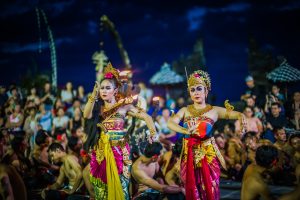
Unveiling Bali’s Rich Tapestry: A Cultural Exploration of History and Heritage
Table of Contents
Unveiling Bali’s Rich Tapestry: A Cultural Exploration of History and Heritage
Step into the enchanting world of Bali and embark on a captivating journey through its vibrant history and cultural heritage. In this blog post, I will guide you through Bali’s rich tapestry, offering insights into its ancient traditions, fascinating historical sites, and the diverse influences that have shaped this tropical paradise.

Bali’s Ancient Origins
Bali’s history is steeped in myth and legend, with tales of gods, demons, and ancient kingdoms weaving a captivating narrative. The island’s origins can be traced back over 2,000 years, and its cultural heritage is a reflection of the various influences it has encountered throughout history. Here are some key highlights of Bali’s ancient past:
- Hindu-Buddhist Kingdoms: Bali was deeply influenced by Indian culture and religion during the early centuries. Hindu-Buddhist kingdoms emerged, leaving behind magnificent temples and sculptures that still stand as testaments to the island’s spiritual devotion.
- Majapahit Empire: In the 14th century, Bali came under the rule of the mighty Majapahit Empire from Java. This period witnessed the spread of Javanese culture, traditions, and artistic styles, which influenced Bali’s artistic expressions and religious practices.
Cultural Treasures of Bali

Bali’s rich history and heritage are brought to life through its cultural treasures. From ancient temples to traditional arts and rituals, the island offers a myriad of experiences that immerse you in its cultural tapestry. Here are some must-visit cultural sites in Bali:
- Pura Besakih: Known as the “Mother Temple of Bali,” Pura Besakih is the most important and largest temple complex on the island. Nestled on the slopes of Mount Agung, this sacred site dates back to the 8th century and showcases magnificent Balinese architecture.
- Ubud Palace: Located in the heart of Ubud, the cultural capital of Bali, Ubud Palace is a living testament to the island’s royal heritage. The palace is adorned with intricate carvings and serves as a venue for traditional dance performances, offering a glimpse into Bali’s artistic traditions.
- Ubud Art Market: A visit to the Ubud Art Market allows you to immerse yourself in the vibrant world of Balinese arts and crafts. Explore the stalls filled with traditional handmade items, including intricately woven textiles, wood carvings, and beautiful paintings.
Preserving Bali’s Cultural Heritage
Preserving Bali’s cultural heritage is crucial to maintaining its unique identity and ensuring its continuity for future generations. Several organizations and initiatives play a vital role in safeguarding Bali’s traditions. Here’s a glimpse into their efforts:
- Bali Cultural Heritage: Bali Cultural Heritage is a nonprofit organization dedicated to preserving and promoting Balinese culture. They organize events, workshops, and exhibitions to raise awareness and provide opportunities for artists and craftsmen to showcase their talents.
- Museum Puri Lukisan: Located in Ubud, Museum Puri Lukisan is the oldest art museum in Bali. It houses an extensive collection of Balinese paintings and sculptures, preserving and displaying artworks that depict the island’s cultural heritage.
- Museum Pasifika: For art enthusiasts, a visit to Museum Pasifika is a must. Located in Nusa Dua, the museum showcases a remarkable collection of artworks from Bali, Indonesia, and other countries across the Asia-Pacific region. The museum’s exhibits highlight the diverse art forms and cultural heritage of the region, providing a deeper understanding of Bali’s artistic traditions.
Experiencing Bali’s Living Heritage
To truly immerse yourself in Bali’s rich history and heritage, engage in authentic cultural experiences. Here are some recommendations to make your journey even more memorable:
- Traditional Dance Workshops: Join a traditional dance workshop where you can learn the graceful movements and intricate hand gestures of Balinese dance forms like Legong and Barong. Not only will you appreciate the artistry behind these performances, but you’ll also gain insights into the stories and symbolism woven into the dances.
- Batik and Silver Jewelry Workshops: Bali is renowned for its exquisite batik fabrics and intricate silver jewelry. Participate in workshops where you can learn the art of batik-making or create your unique piece of silver jewelry under the guidance of skilled artisans. These hands-on experiences offer a glimpse into the craftsmanship and artistry that have been passed down through generations.
The Best Visa Agency in Bali – www.visa4bali.com
Experienced specialists managing the entire application process from start to finish !





